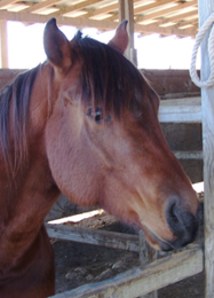Dressage:
The Art of Classical Riding

Dressage, The Art of Classical Riding by Sylvia Loch takes a broad look at the history and philosophy of horseback riding from the fifth century before Christ to the time of the book's publication (first published in 1990). With a broad stroke, the author discusses various training techniques and riding methods of numerous masters and other riders from various countries throughout the centuries.
The illustrations, in addition to the writing, present a good understanding of different approaches to riding and their effects. The book includes reproductions of paintings, drawings, and photographs which illustrate riding at both its best and its worst.
In the foreword to this book, Brigadier General Kurt Albrecht — director of the Spanish Riding School of Vienna from 1974 through 1985 — writes:
Sylvia Loch's work is of real and special significance since it highlights the fundamental values which have survived over thousands of years. This is particularly important at a time when the present enthusiasm for dressage has pushed that most vital aspect, namely the Art, somewhat into the background so that it is not always accorded its true place of value.
Sylvia Loch admits that the word “dressage” means different things to different people. After presenting a history of definitions and uses of the term, she states:
In this book, the word dressage will be used where relevant. For most of us however, this must traditionally denote manege work above elementary level, i.e., when the horse is collected and able to execute those free, natural movements despite our weight on his back.
The author covers the topic from early court riding to modern Olympic competition. In this regard, she writes of the influence on riding brought about by changes in military tactics as well as social revolutions. The book presents various training practices which emphasized both reward and punishment used to get the horse to perform as the trainer wishes. She also discusses how the influences of art and competition effect the approach which is used.
Sylvia Loch discusses the reasons for the use of different seats and why they evolved. These seats vary from the deep balanced seat described by the Greek general Zenophon around 400 B.C. to the forward seat proposed by the Italian Federico Caprilli which came about with the advent of showjumping at the turn of the twentieth century.
Many of the methods which influenced riding throughout the centuries came about because of certain exigencies of the time. Regrettably, the reasons for the influences have not always been considered by those who appropriated them. Sylvia Loch tries to get her readers to consider the “classical” philosophy when deciding on a method of training as well as judging a horse's performance.
This philosophy encompasses various principals presented by General Xenophon: tact, self–discipline, beauty, freedom for the horse, and lightness. These ideals were echoed centuries later by the Frenchman François Robichon de la Guérinière in the eighteenth century:
Praise as much as possible, punish immediately, and only as much s necessary: the severity of the punishment must be matched to the horse's temperament. A gentle remonstrance applied at the proper psychological moment will often suffice to regain obedience. A horse so treated will perform his task with cheerful acceptance, verve, and brilliance rather than with resistance and resignation; he will also remain at his peak of excellence longer. If a horse disobeys it is generally because he has simply not understood what the rider wants or because of some physical deficiency.
Every horse enthusiast should read this book to get a better perspective of how riding has been perceived through the ages and how these perceptions influence or should influence the world of riding today.